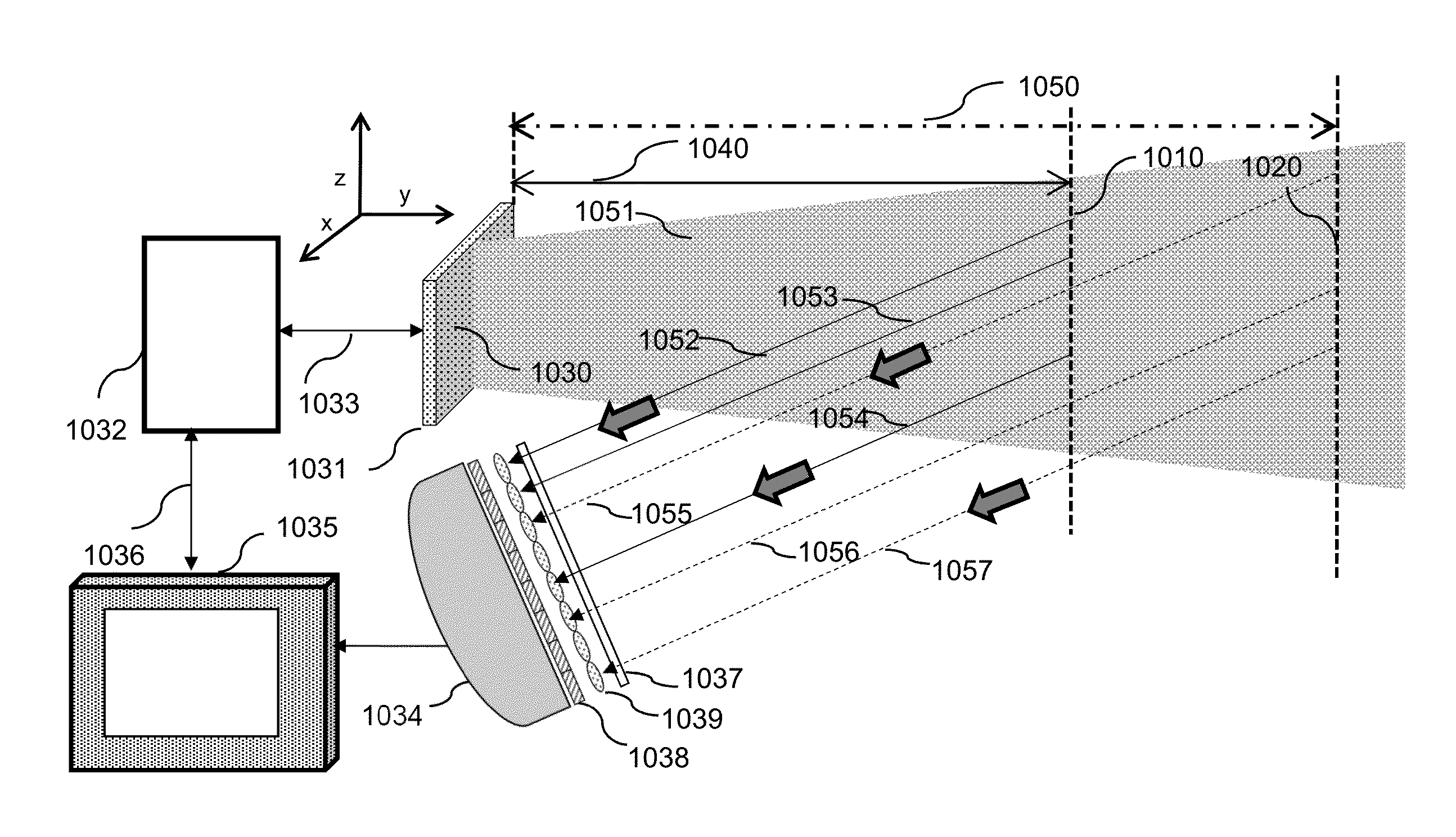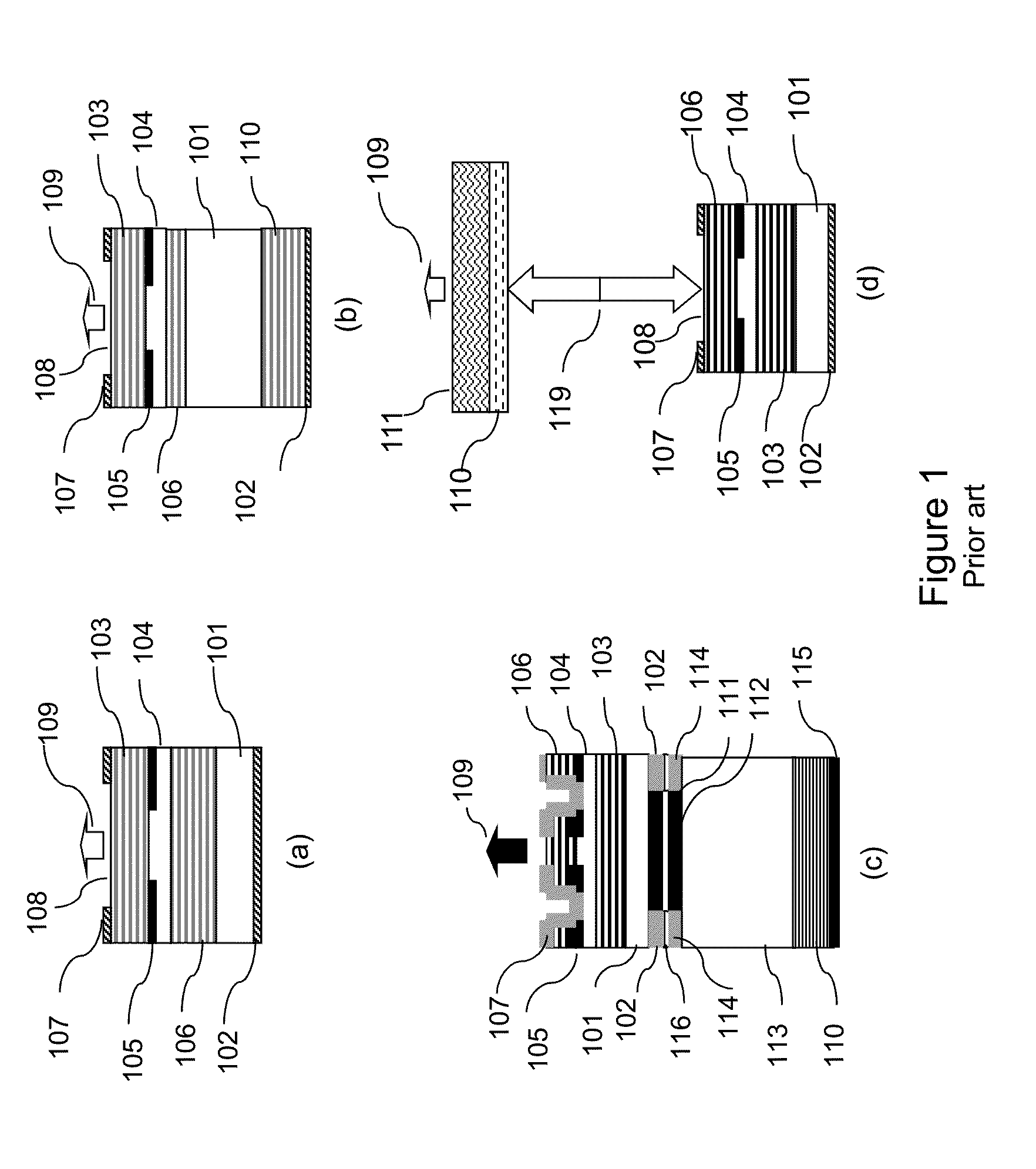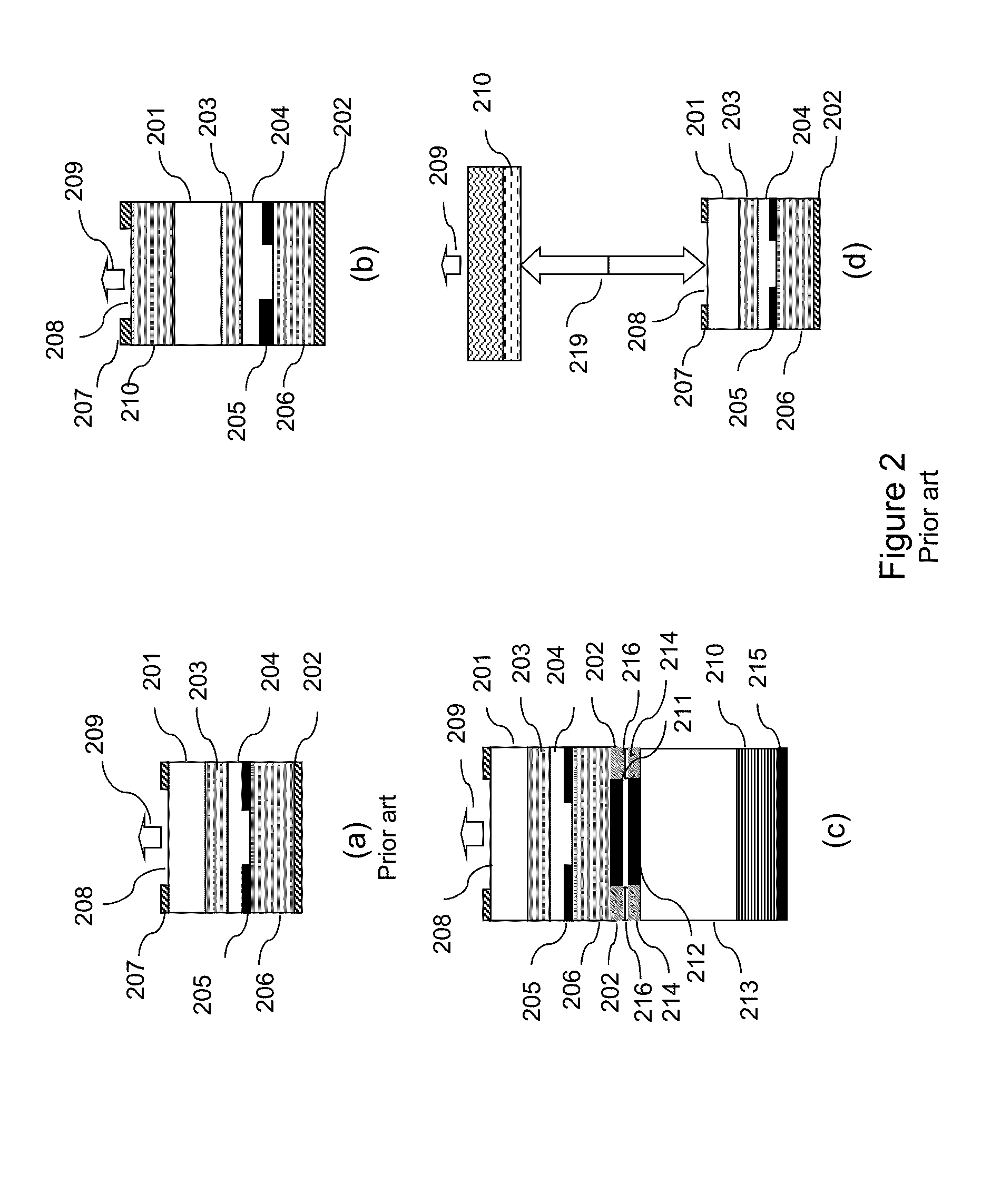2-D Planar VCSEL Source for 3-D Imaging
a 3-d imaging and vcsel source technology, applied in the field of 3d optical sensing and imaging apparatus, can solve the problems of detectors and complex processors limiting applications to limited environments, and limiting applications to a few areas, so as to achieve more accurate proximity sensing
- Summary
- Abstract
- Description
- Claims
- Application Information
AI Technical Summary
Benefits of technology
Problems solved by technology
Method used
Image
Examples
Embodiment Construction
[0037]A broad framework and main principles and important aspects of the invention are disclosed using exemplary embodiments that are represented in different drawing figures. For clarity and ease of description, each embodiment includes only a few aspects. However, different aspects presented in each embodiment may be practiced separately or in various combinations and sub-combinations. Many different combinations and sub-combinations of the representative embodiments within the broad framework presented in this written specification, may be apparent to those skilled in the art but not explicitly shown or described, should not be construed as precluded.
[0038]Vertical Cavity Surface Emitting Laser (VCSEL) emits radiation in a direction perpendicular to the substrate plane. The radiation emitted from a VCSEL is a substantially symmetric circular beam having a very low divergence (narrow beam emission). It is particularly suited for applying simple beam shaping elements such as variou...
PUM
 Login to View More
Login to View More Abstract
Description
Claims
Application Information
 Login to View More
Login to View More - R&D
- Intellectual Property
- Life Sciences
- Materials
- Tech Scout
- Unparalleled Data Quality
- Higher Quality Content
- 60% Fewer Hallucinations
Browse by: Latest US Patents, China's latest patents, Technical Efficacy Thesaurus, Application Domain, Technology Topic, Popular Technical Reports.
© 2025 PatSnap. All rights reserved.Legal|Privacy policy|Modern Slavery Act Transparency Statement|Sitemap|About US| Contact US: help@patsnap.com



